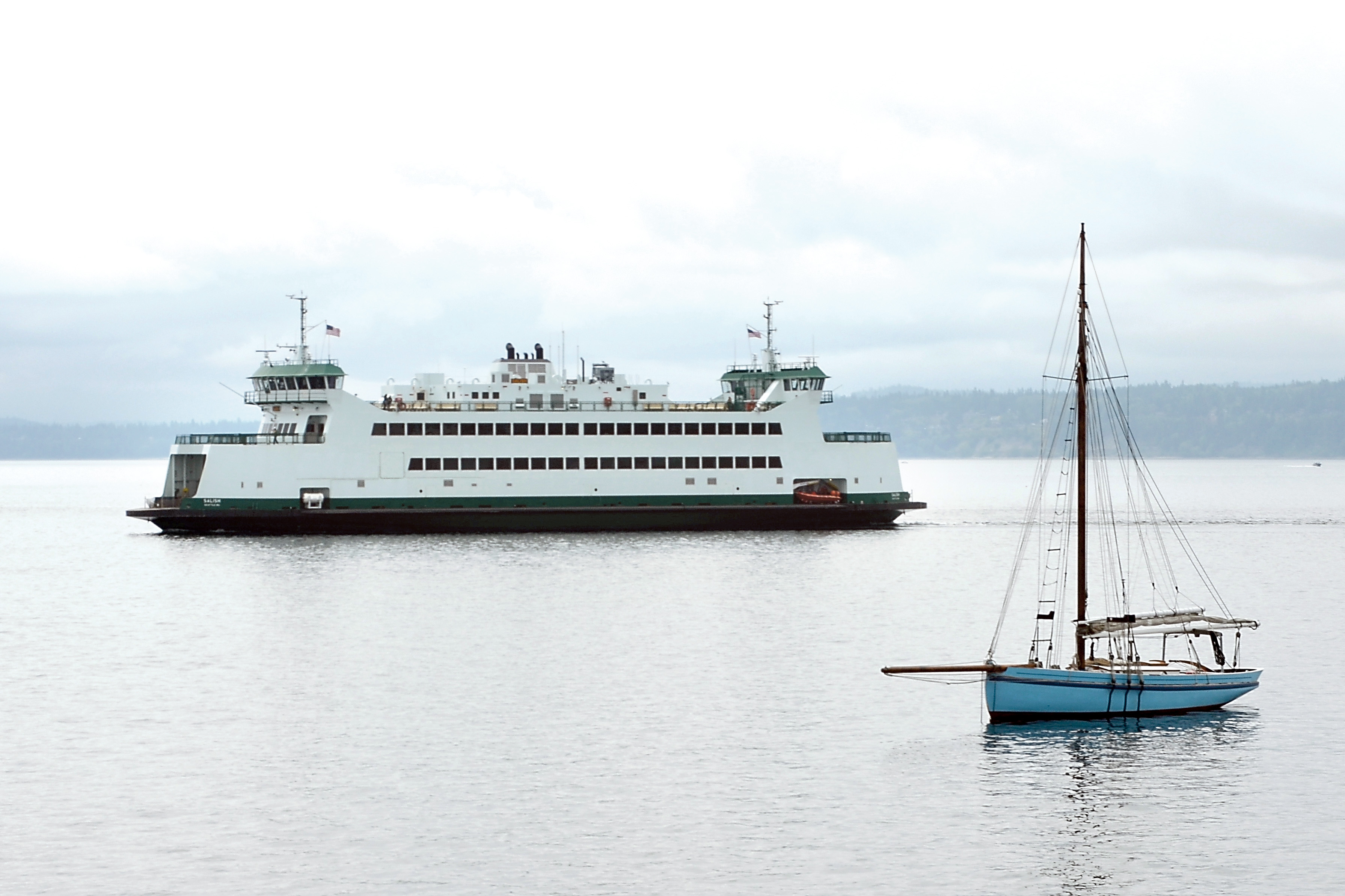PORT TOWNSEND — The state ferries system has attached a device to the hull of the MV Salish on the Port Townsend-Coupeville route to provide data on low-oxygen water and ocean acidification from Admiralty Inlet.
“This will help us understand Puget Sound much better,” said Sandy Howard, a Department of Ecology spokesperson.
“It provides a new piece of information that we never had before and will allow us to monitor current, velocity, temperature and the flow of fresh and salt water on a long-term basis.”
During a recent servicing, Washington State Ferries crews attached the sensor, an acoustic doppler current profiler, to the bottom of the Salish, which makes 11 daily crossings between Port Townsend and Coupeville on Whidbey Island.
The sensor gathers data during the crossings of the area known as Admiralty Inlet, or Admiralty Reach, the gateway to the Puget Sound, where salt and fresh water merges.
The project is a partnership among Ecology, Washington State Ferries and the University of Washington.
It is supported by a $261,000 grant from the U.S. Department of Ecology.
The rudder-shaped device, which extends about 40 inches from the middle of the hull, both stores and transmits data, according to Cotty Fay, chief naval architect and manager of vessel design for the ferry system.
The device is expected to last at least five years and will cause the ferry to have a “very small” slowdown of about 0.5 percent, Fay said.
“Every tide is different than the one before,” Fay said. “Over a long period of time, we will get a profile of how the water moves in and out of Puget Sound.”
The device’s sensors send tiny sound waves down through the water column beneath the ferry, similar to the depth sounders and ‘fish finders’ used on many recreational vessels.
The time it takes for the echoes to return to the device is used to calculate the distance beneath the ship, and the Doppler shift of the ping is used to calculate speed and direction of the water flowing under the ferry.
The narrow constriction point between the Strait of Juan de Fuca and Puget Sound is a relatively shallow bottleneck and makes it is a good place to measure water exchange and circulation between Puget Sound and the Pacific Ocean, Howard said.
The water velocity information will help scientists understand how much Puget Sound is influenced by the ocean and provide data about how much low-oxygen water and corrosive water with very low pH may be coming into Puget Sound from the ocean.
“Low-oxygen water is a problem because aquatic life needs oxygen to thrive. Aquatic life can also be sensitive to low pH,” Howard said.
“The information will also help scientists understand nutrients and algae blooms, and this testing will increase understanding about the transport of toxic chemicals and ocean acidification.”
The MV Kennewick, which shares the Port Townsend-Coupeville route with the Salish, also will be fitted with a sensor in the near future, Howard said.
Once the program is in place, it will be used to collect data on ferry routes throughout the system, according to Carol Maloy who heads Ecology’s marine monitoring program.
Information about the program is expected to be posted regularly on Ecology’s blog, http://ecologywa.blogspot.com/.
________
Jefferson County Editor Charlie Bermant can be reached at 360-385-2335 or cbermant@peninsuladailynews.com.

